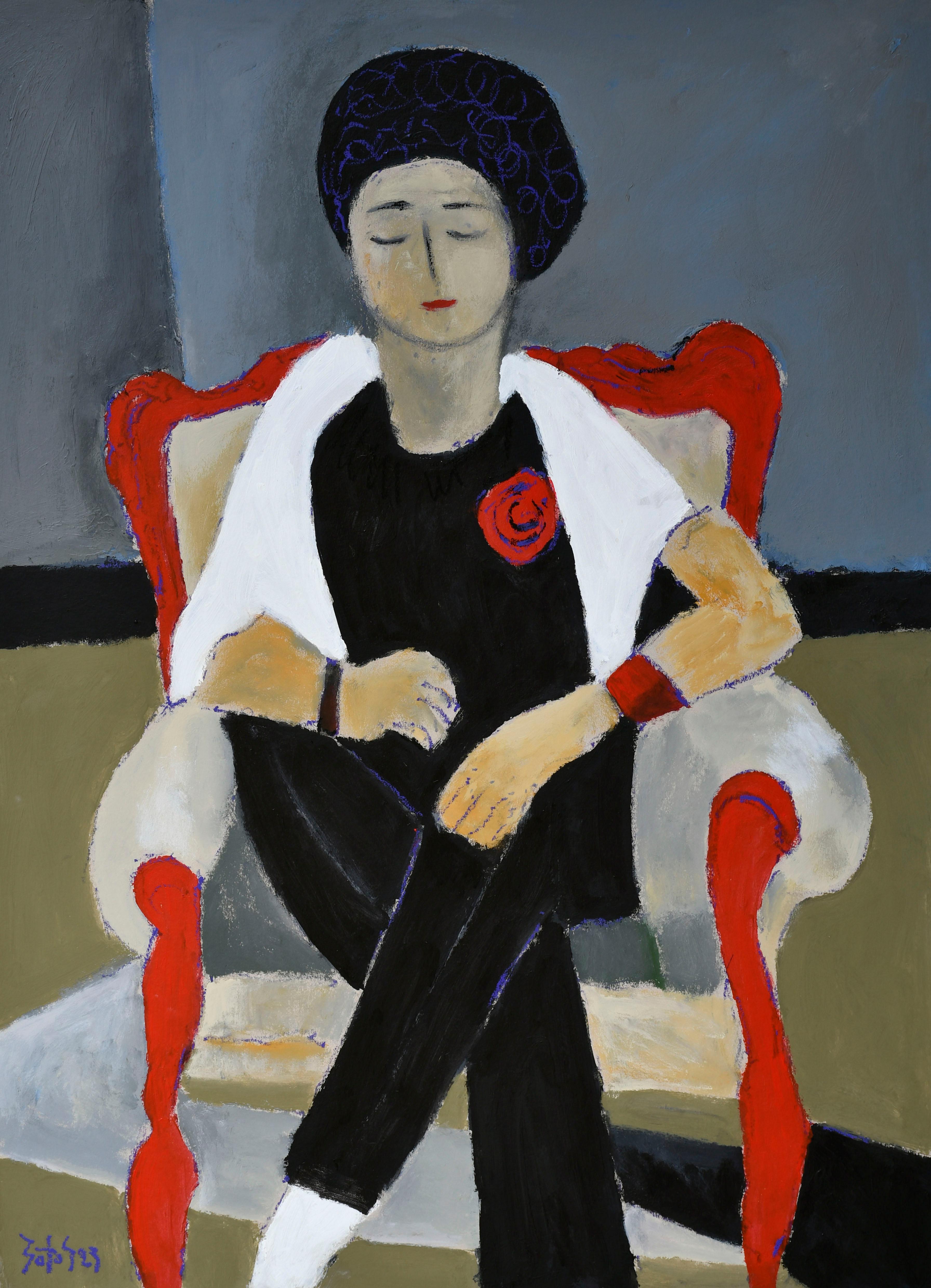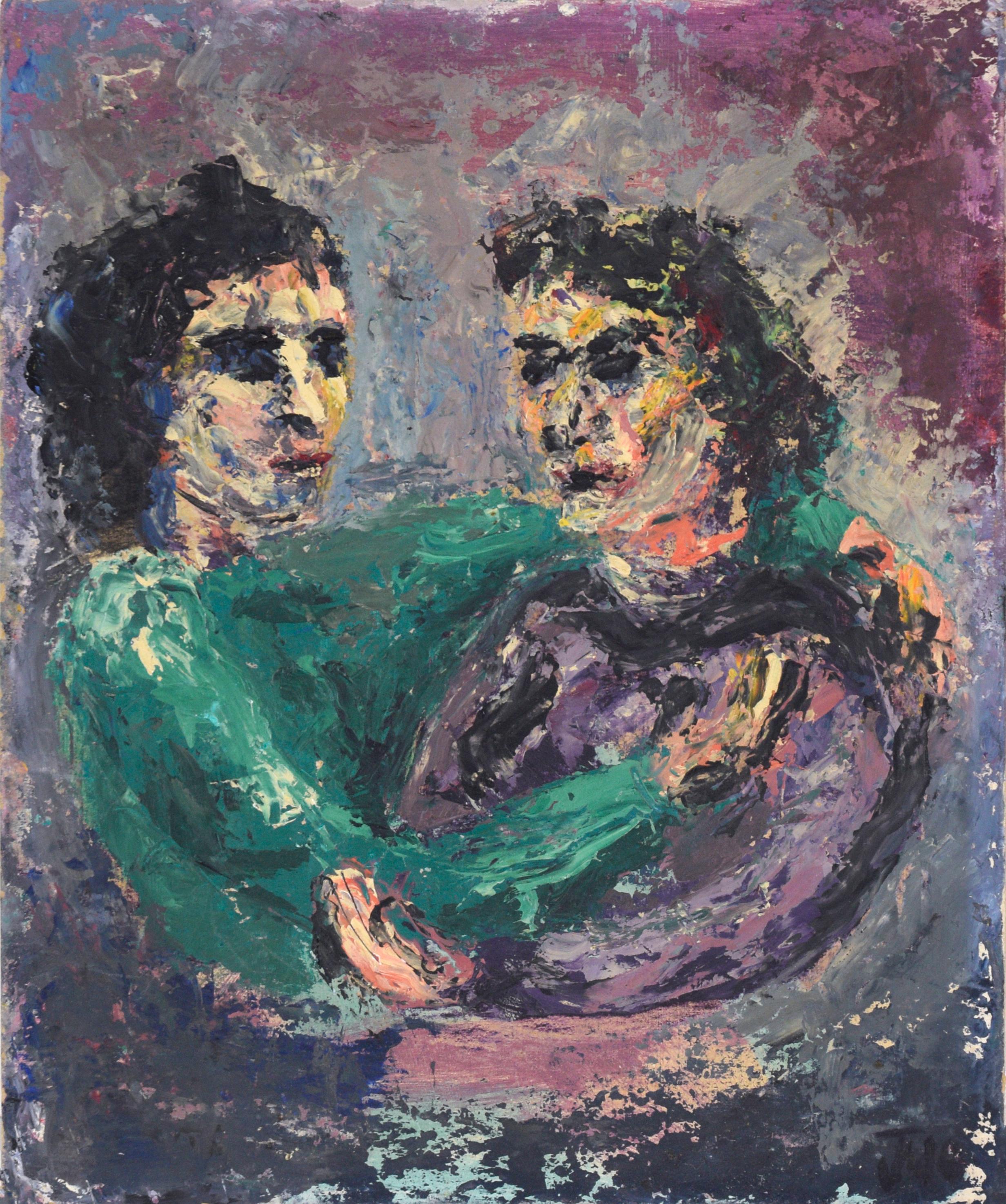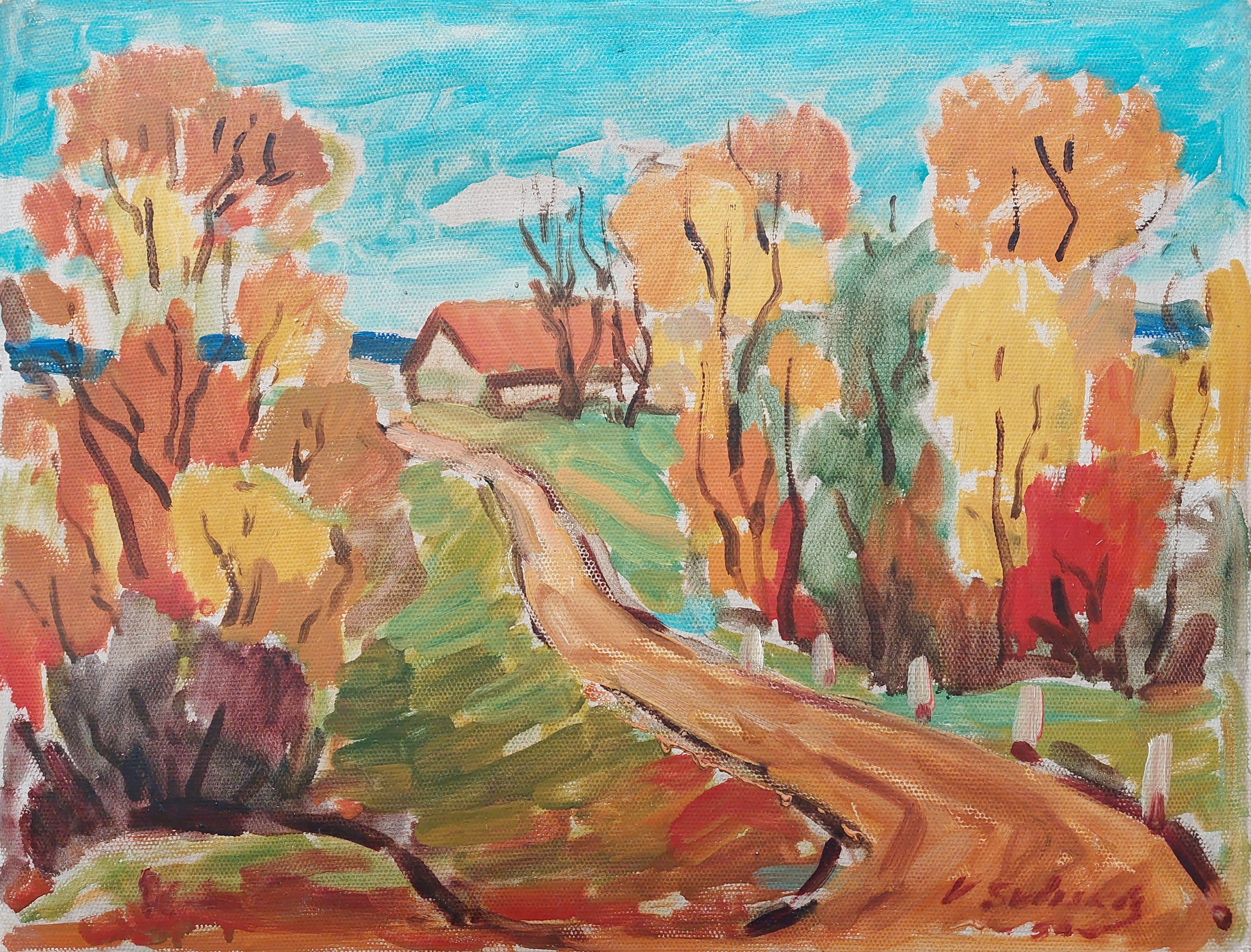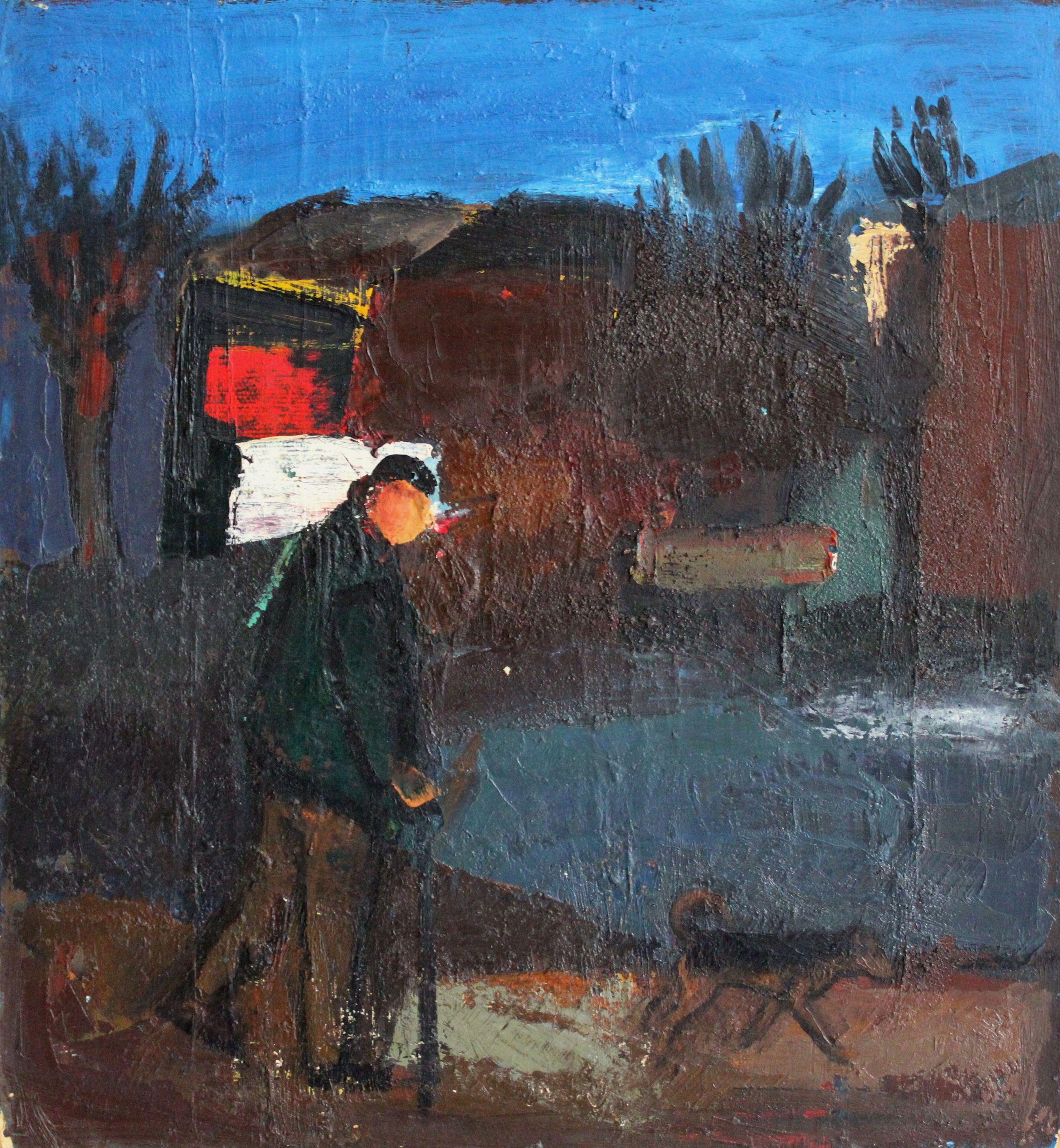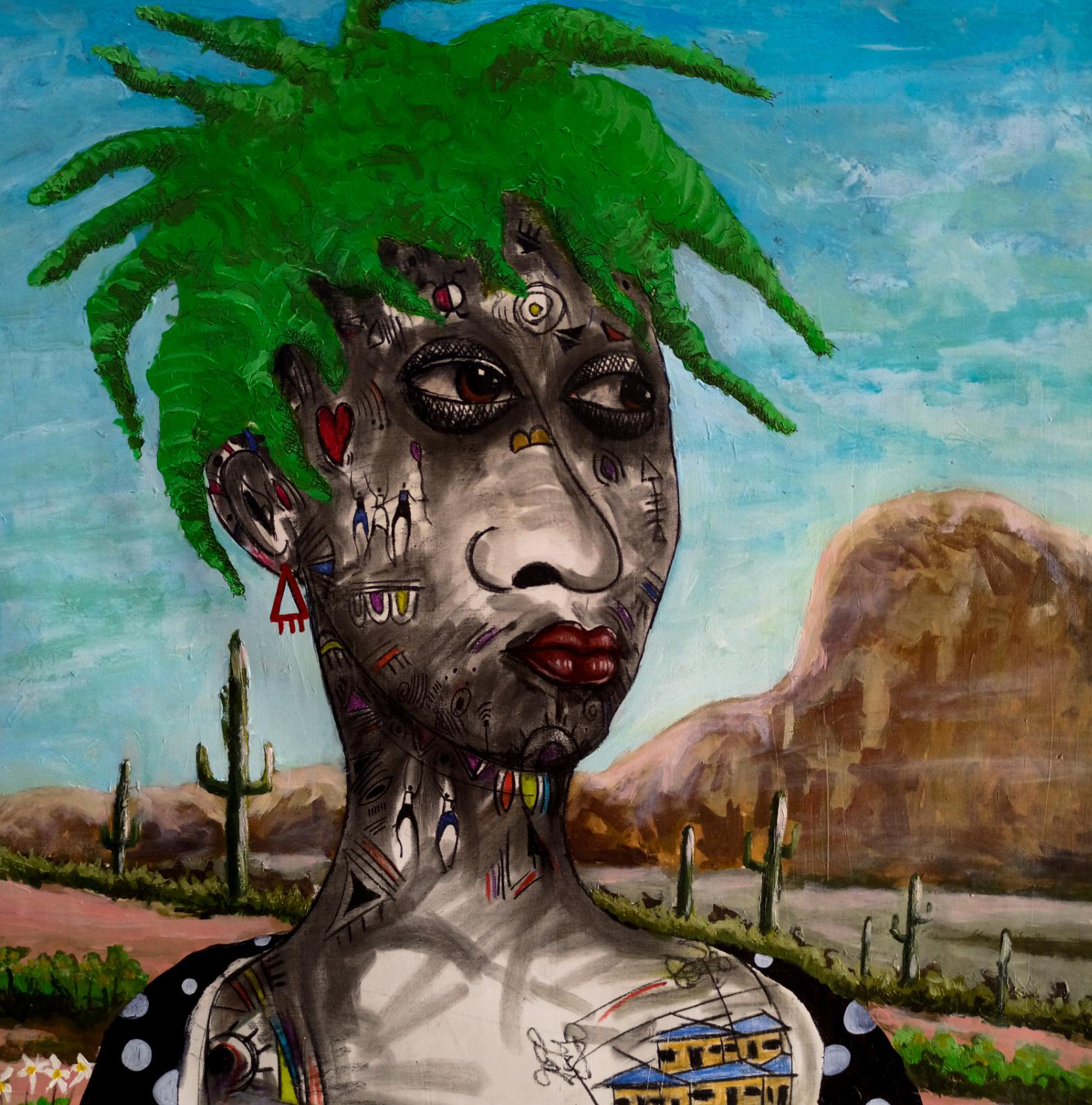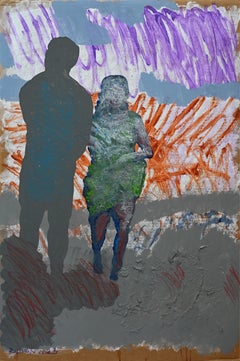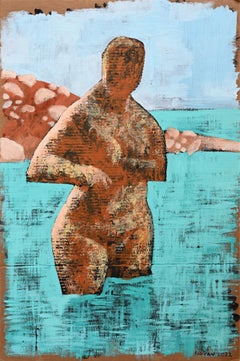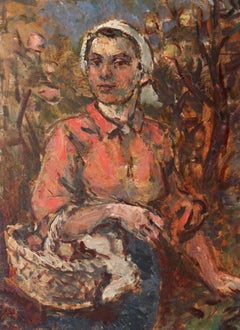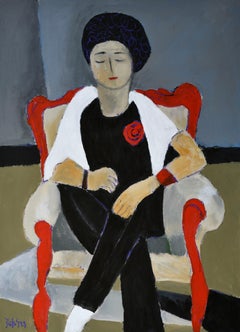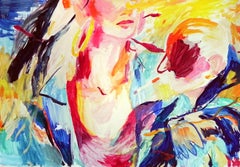
Dance of Ordinance VI
View Similar Items
Want more images or videos?
Request additional images or videos from the seller
1 of 9
Charles J. de BisthovenDance of Ordinance VI2017
2017
About the Item
- Creator:Charles J. de Bisthoven (1992, Belgian)
- Creation Year:2017
- Dimensions:Height: 21.66 in (55 cm)Width: 29.53 in (75 cm)Depth: 3.15 in (8 cm)
- Medium:
- Movement & Style:
- Period:
- Condition:
- Gallery Location:Berlin, DE
- Reference Number:1stDibs: LU68633082453
About the Seller
5.0
Vetted Seller
These experienced sellers undergo a comprehensive evaluation by our team of in-house experts.
Established in 2004
1stDibs seller since 2017
41 sales on 1stDibs
Typical response time: 18 hours
More From This SellerView All
- Wind & Dust - 21st Contemporary Art, Landscape, Figurative Painting, GrayBy Alexandru RădvanLocated in Berlin, DEWind & Dust, 2023 acrylic on cardboard 119 H x 79 W cm 46 27/32 H x 31 7/64 W cm The series of painted cardboards by Alexandru Rădvan is about our moments of 'respiro' about the mi...Category
2010s Contemporary Figurative Paintings
MaterialsAcrylic, Cardboard
- Red Dirt & Sea - 21st Century, Water, Nude, Landscape, FigurativeBy Alexandru RădvanLocated in Berlin, DERed Dirt & Sea, 2022 acrylic on cardboard 119 H x 79 W cm 46 27/32 H x 31 7/64 W cm The series of painted cardboards by Alexandru Rădvan is about our moments of 'respiro' about the...Category
2010s Contemporary Figurative Paintings
MaterialsAcrylic, Cardboard
- After the Rain - 21st Contemporary Art, Landscape, Black, BlueBy Alexandru RădvanLocated in Berlin, DEAfter the Rain, 2023 acrylic on cardboard 119 H x 79 W cm 46 27/32 H x 31 7/64 W cm The series of painted cardboards by Alexandru Rădvan is about our moments of 'respiro' about the...Category
2010s Contemporary Figurative Paintings
MaterialsAcrylic, Cardboard
- Free Study - Wrestler - 21st Century, Nude, FigurativeBy Alexandru RădvanLocated in Berlin, DEFree Study - Wrestler, 2021 acrylic on cardboard 119 H x 79 W cm 46 27/32 H x 31 7/64 W cm The series of painted cardboards by Alexandru Rădvan is about our moments of 'respiro' ab...Category
2010s Contemporary Figurative Paintings
MaterialsAcrylic, Cardboard
- Summer Gold and Corn - Contemporary Art, Figurative, YellowBy Alexandru RădvanLocated in Berlin, DESummer Gold and Corn, 2021 acrylic on cardboard 119 H x 79 W cm 46 27/32 H x 31 7/64 W cm The series of painted cardboards by Alexandru Rădvan is about our moments of 'respiro' abo...Category
2010s Contemporary Figurative Paintings
MaterialsAcrylic, Cardboard
- Man with Dogs - 21st Contemporary Art, Cardboard, Landscape, FigurativeBy Alexandru RădvanLocated in Berlin, DEMan with Dogs, 2023 acrylic on cardboard 119 H x 79 W cm The series of painted cardboards by Alexandru Rădvan is about our moments of 'respiro' about the minutes/seconds when we not...Category
2010s Contemporary Figurative Paintings
MaterialsAcrylic, Cardboard
$1,048 Sale Price20% OffFree Shipping
You May Also Like
- Nandor Vagh Weinmann, Oil on cardboard, Naked Back, 1930sLocated in Saint Amans des cots, FROil on cardboard by Nandor VAGH WEINMANN (1897-1978), France, 1930s. Naked back. With frame: 64x56 cm - 25.2x22 inches ; without frame: 46x38cm - 18.1x15 inches. 8F format. Signed "Nandor V. Weinmann" lower left. In its Montparnasse frame. Very good condition. Born October 3, 1897 in Budapest, Nándor is the older brother of Elemer and Maurice Vagh-Weinmann. He came to Paris to present his work in 1931. He died on December 12, 1978 near Montereau (Seine-et-Marne) following an automobile accident. He is the most colorful of the three “expressionist” brothers. Painter of figures, landscapes, especially open mountains, and bouquets in bright colors. He is also a religious painter and then finds the tragic condition. Born in BUDAPEST on October 3, 1897, Nandor Vagh Weinmann belongs to a profoundly artistic people. Living in the heart of Central Europe where they came from Asia a millennium ago, the Hungarians have preserved a strong ethnic individuality whose mark is their very synthetic, non-Indo-European language. Resistant to secular invasions, they have kept the virtues of a very ancient humanity that have become rare in our modern world, especially since their way of life has remained essentially rural until today. In the arts they know how to express a generous, extreme sensibility and by the poetic verb, by the musical rhythms and also by a popular art of a richness, an exceptional harmony. Until the age of thirty-four, during the decisive years of childhood and youth, Nandor Vagh Weinmann was intimately imbued with popular life and the soul of Hungary. From the capital where his father was a jeweler and had a family of ten children, Nandor was the fifth, he knew first of all the suburbs, the populated districts, the rigors in winter of the cold and the snow. A very mobile existence made him acquainted with all of Hungary, from the Danube to Transylvania, its infinite plains and its wild mountains, its immense villages with ample low houses, and its towns which are still immense villages. The painter is passionate about rustic works, harvest scenes, beautiful folk costumes. Coming into direct contact with the peasants, he learned to know their soul. These contacts gave the artist a direct feeling for popular life and soul, as Millet once understood the peasants of Barbizon and Normandy whose existence he shared. What fascinated Nandor Vagh Weinmann above all were the festivals which enlivened the dreary life of the countryside, the circuses, the merry-go-rounds, the gypsies unleashing orgies of music, light and color. In the party, and especially the Hungarian party, the whole soul of a people, all its energy, its need for movement, for intensity, is expressed in its pure state and realizes the primary and essential form of what is called beauty. And as if melted at the party, there is the infinite steppe where herds of horses and oxen circulate where terrible storms sometimes roar where the seasons unfold their grandiose splendours. The young Nandor Vagh Weinmann nourishes his sensitivity to his inexhaustible shows, both eternal and always new, a sensitivity which very early declared itself that of a painter. Since the age of fourteen he painted, and since then he never stopped doing it. Two of his brothers Maurice, two years his junior, who had a remarkable career similar to that of Nandor and later Elemer who became Maurice's pupil, also devoted themselves to painting, despite family obstacles. And the three brothers united by a common passion worked together in Hungary and later in France. Painting was so much in the blood of the family, as in the past among the Veroneses, the Breughels, the Lenains, the Van Loos and so many other artistic dynasties, that three sons of the Vagh Weinmanns became painters in their turn. One of these, Emeric, son of Nandor, today occupies an important place in the contemporary school. Nandor, at fifteen, was a pupil of the Academy of Fine Arts in Budapest where he worked diligently, then at that of Vienna. He painted many portraits, but also landscapes, compositions and, by his relentless work, managed to live from his brush, although married very young and having to overcome many hardships. He therefore knew the hardships and miseries of life. These strongly impregnated his vision as an artist and explain the thrill of humanity that runs through all his work. A particularly moving experience was reserved for him at the age of twenty. In the hospitals of Budapest he had to paint extraordinary cases, operations, frightful wounds, the deformations to which our poor body is subjected by traumas and physiological decompositions. In these circumstances, it is not a question of gratuitous art, of formal research but of immediate, authentic expressions of our flesh and our being. We know that Breughel Velázquez and Goya had been haunted by the sight of cripples and of madmen Géricault by that of corpses. But life is ultimately stronger than anything, and it is life that Nandor Vagh Weinmann has passionately observed and translated through all the places where he has always painted on nature. Nothing stopped him. It happened to him to paint, for example in front of the mill of Linselles by a weather so cold, that nobody could stay outside, and that he did not leave the place before having finished his work. Because he works constantly on the ground, under the sky, in the silence he loves. His reputation is established. He exhibited at the national fair in Budapest, in the big cities of Hungary Szeged, Szombathely, Veszprém, Kaposvar. In 1931, like all artists in the world, he came to France. But unlike the others, he did not settle in Paris. Because Nandor Vagh Weinmann does not belong to this group of cosmopolitans that we call the School of Paris. He settled in Toulouse, where he remained for a long time with his brothers, and traveled throughout France, eager for new ties, exhibiting in the most diverse cities, in Bordeaux, Marseille, Lyon, Agen, Bayonne, Dax, Tarbes, Grenoble, Nice, Cannes, Strasbourg, Mulhouse, Colmar, Lille. He even crossed borders. He was in Saint Sebastian, in Geneva, and once in Egypt in 1927 where he painted King Fouad...Category
1930s Expressionist Figurative Paintings
MaterialsOil, Cardboard
- At the autumn garden. Oil on cardboard, 80 x 57 cmLocated in Riga, LVAt the autumn garden. Oil on cardboard, 80x57 cm Janis Rikmanis (1901.5.IV – 1968.25.III) graduated Figurative painting studio of Latvia Art academy (1931). He took part in exhibiti...Category
1950s Expressionist Portrait Paintings
MaterialsOil, Cardboard
- Lady with red roseBy Sotos ZachariadisLocated in Spetses, GRA stylish lady with a red rose pinned on her black dress is sitting in a retro armchair. A new series (2023) from SOTOS_Z Zachariades. Portraits of live...Category
21st Century and Contemporary Expressionist Portrait Paintings
MaterialsOil, Cardboard
- "Mother and Daughter" Expressionist Portrait in Oil on CardstockLocated in Soquel, CA"Mother and Daughter" Expressionist Portrait in Oil on Cardstock Mid Century expressionist portrait by unknown artist Jane W. Grace (American, 20th C...Category
1940s Expressionist Figurative Paintings
MaterialsOil, Cardboard
$340 Sale Price20% Off - Old Town Streets, Mid Century Modern Chilean Village Figurative LandscapeBy Luis ValenzuelaLocated in Soquel, CAOld Town Streets, Mid Century Modern Chilean Village Figurative Landscape Vibrant and expressive mid century modern figural landscape oil painting by Luis Valenzuela (Chilean, 20th Century), 1965. Small silhouetted figures stroll down the colorful yellow and blue city streets of old Santiago, Chile at night. The artist uses loose, painterly brushstrokes and dots the canvas with warm red highlights, giving this piece a sense of exuberance and life. Signed "Luis Valenzuela 1965" lower left. Presented in a carved period giltwood frame. Board size; 20"H x 24"W. Luis Valenzuela was born in Santiago de Chile. He studied his elementary and middle school in Victorino Lastarria (Providencia). At age 17 he started in the oil painting arts, where his innate talent flows. It was perfected in the Palace of Fine Arts (1964, 1965), receiving instruction from teachers Carlos Pedraza, Reinaldo Villaseñor, Matilde...Category
1960s Expressionist Landscape Paintings
MaterialsCanvas, Oil, Cardboard
- Colorful autumn landscape. 1979, oil on cardboard, 46, 5x60 cmLocated in Riga, LVColorful autumn landscape. 1979, oil on cardboard, 46,5x60 cm Based on reality, artist painted expressionistic landscapes in which he dramatized the expression of shapes and colors....Category
1970s Expressionist Landscape Paintings
MaterialsCardboard, Oil

